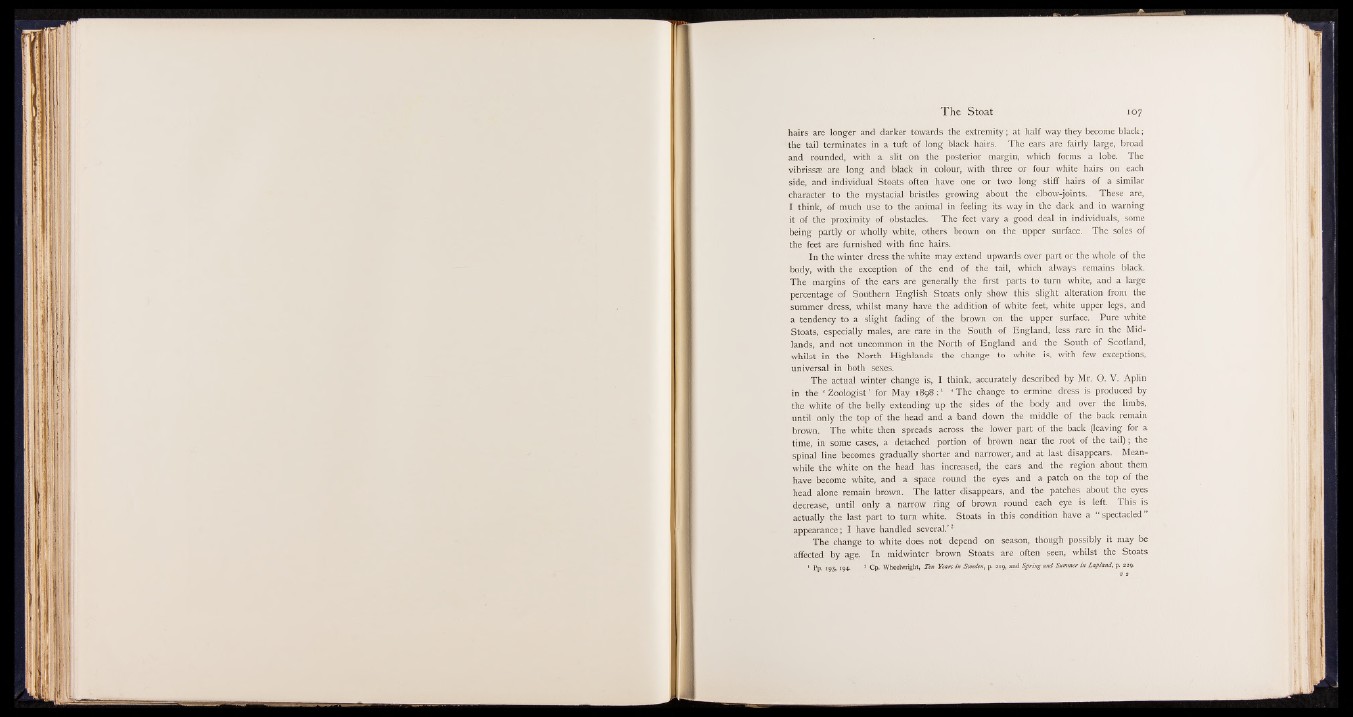
hairs are longer and darker towards the extremity; at half way they become black;
the tail terminates in a tuft of long black hairs. The ears are fairly large, broad
and rounded, with a slit on the posterior margin, which forms a lobe. The
vibrissas are long and black in colour, with three or four white hairs on each
side, and individual Stoats often have one or two long stiff hairs of a similar
character to the mystacial bristles growing about the elbow-joints.. These are,
I think, of much use to the animal in feeling its way in the dark and in warning
it of the proximity of obstacles. The feet vary a good deal in individuals, some
being partly or wholly white, others brown on the upper surface. The soles of
the feet are furnished with fine hairs.
In the winter dress the white may extend upwards over part or the whole of the
body, with the exception of the end of the tail, which always remains black.
The margins o f the ears are generally the first parts to turn white, and a large
percentage of Southern English Stoats only show this slight alteration from the
summer dress, whilst many have the addition of white feet, white upper legs, and
a tendency to a slight fading of the brown on the upper surface. Pure white
Stoats, especially males, are rare in the South of England, less rare in the Midlands,
and not uncommon in the North of England and the South of Scotland,
whilst in the North Highlands the change to white is, with few exceptions,
universal in both sexes.
The actual winter change is, I think, accurately described by Mr. O. V. Aplin
in the ‘ Zoologist ’ for May 18 9 8 :1 ‘ The change to ermine dress is produced by
the white of the belly extending up the sides of the body and over the limbs,
until only the top of the head and a band down the middle of the back remain
brown. The white then spreads across the lower part of the back (leaving for a
time, in some cases, a detached portion of brown near the root of the tail); the
spinal line becomes gradually shorter and narrower, and at last disappears. Meanwhile
the white on the head has increased, the ears and the region about them
have become white, and a space round the eyes and a patch on the top of the
head alone remain brown. The latter disappears, and the patches about the eyes
decrease, until only a narrow ring of brown round each eye is left. This is
actually the last part to turn white. Stoats in this condition have a “ spectacled”
appearance; I have handled several.’ 2
The change to white does not depend on season, though possibly it may be
affected by age. In midwinter brown Stoats are often seen, whilst the Stoats
1 Pp. I93) 194. » Cp. Wheelwright, Ten Years in Sweden, p. 219, and Spring and Summer in Lapland, p. 229.